Here comes a Christmas tradition from a special canton of Switzerland, Appenzell Inner-Rhodes, the smallest Swiss federal state by population number and the last one to award women the right to vote in cantonal elections (only in 1991). Appenzell Inner-Rhodes is most known for the practice of Landsgemeinde, open voting by the raising of hands in the public town square, one of the oldest forms of direct democracy. This canton is also known for its unique folk costumes, naive paintings and agrarian traditions. Its relative isolation, it is located away from the main communication routes, was a contributing factor in the preservation of the specificity of traditional practices at various times of the year. One of these unique practices is the Chlausezüüg.
Christmas preparations begin on All Saints’ Day (the 1st of November) with the baking of Chlausebickli, a hand-painted gingerbread biscuit. The Chlausebickli are popular gifts offered to children by their godparents in the period before Christmas and are placed by the window facing the exterior, only to be turned towards the interior when guests are present.

A sweet confectionery originating in Munich, the Chlausebickli have been produced in Appenzell Inner-Rhodes since the 1900s. The motifs come from the traditional naive art paintings of this region and are hand painted with food coloring.

Last year, the museum of the Chateau of Gruyeres put together an exhibition dedicated to Christmas and New Year traditions from the two Appenzell cantons. Here is a series of photos I took at this occasion.
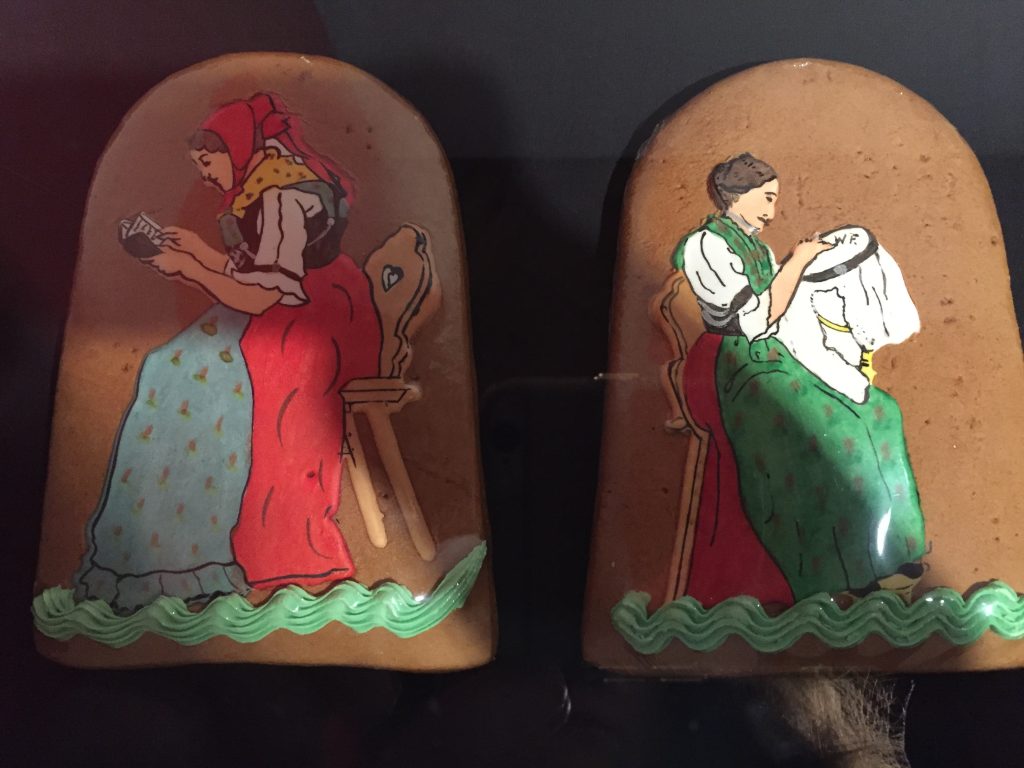
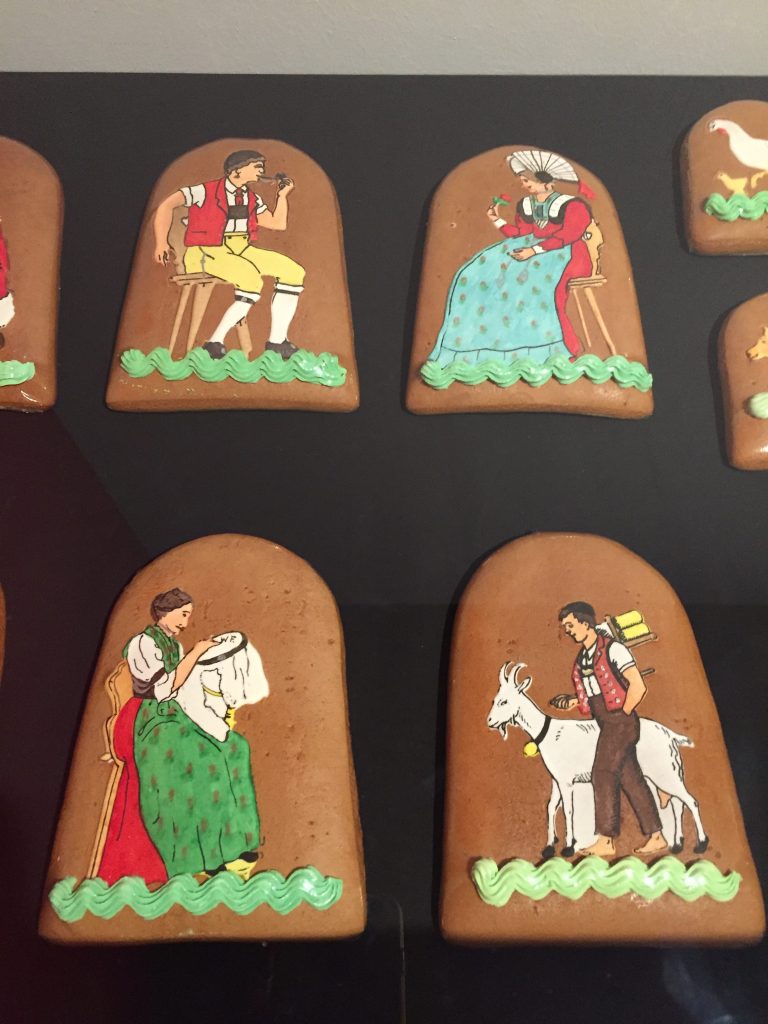
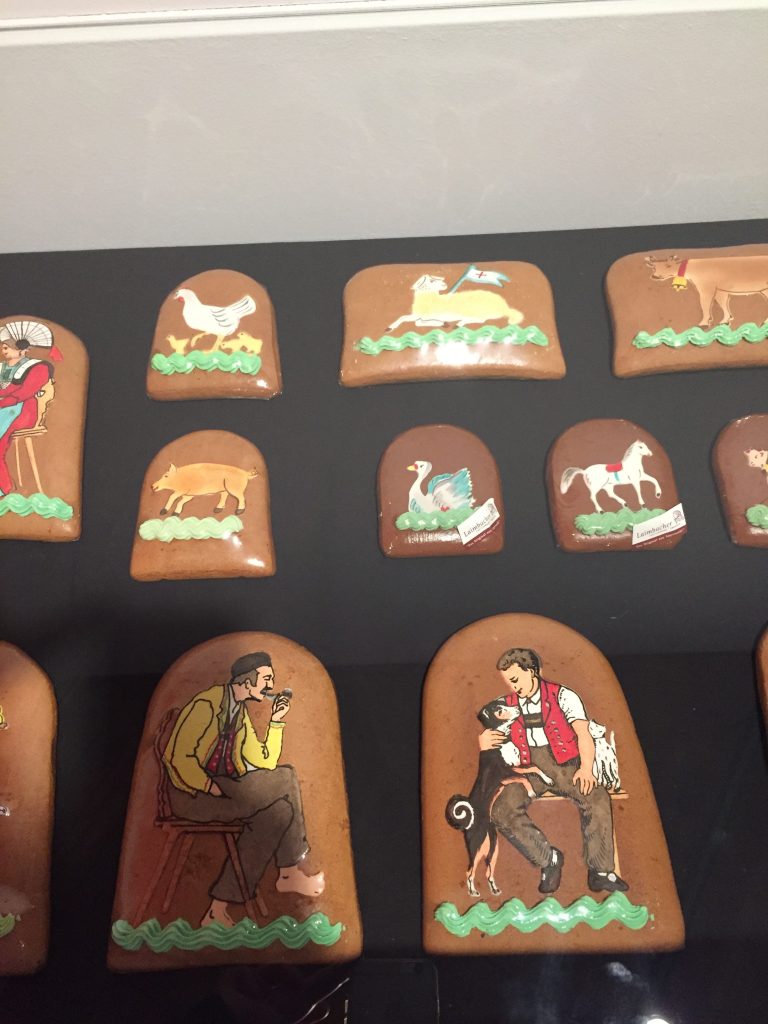
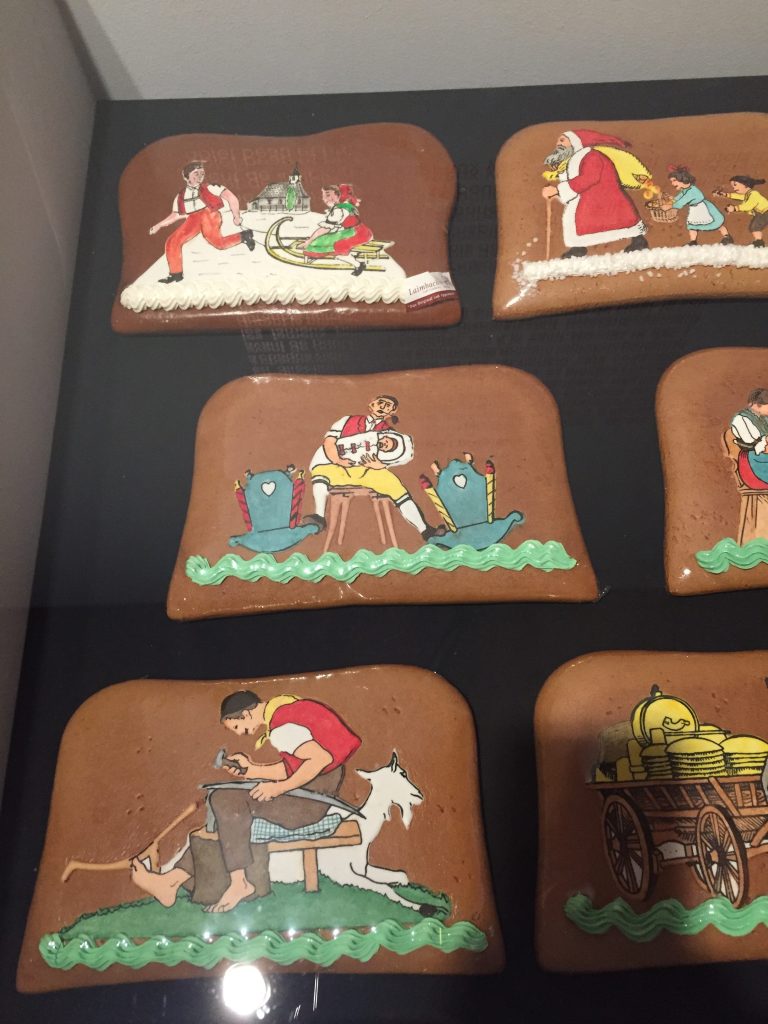
On Saint Nicholas Day the Chlausebickli are removed from the window sills only to reaper on Christmas Eve in the Chlausezüüg, the Appenzell version of the Christmas tree.
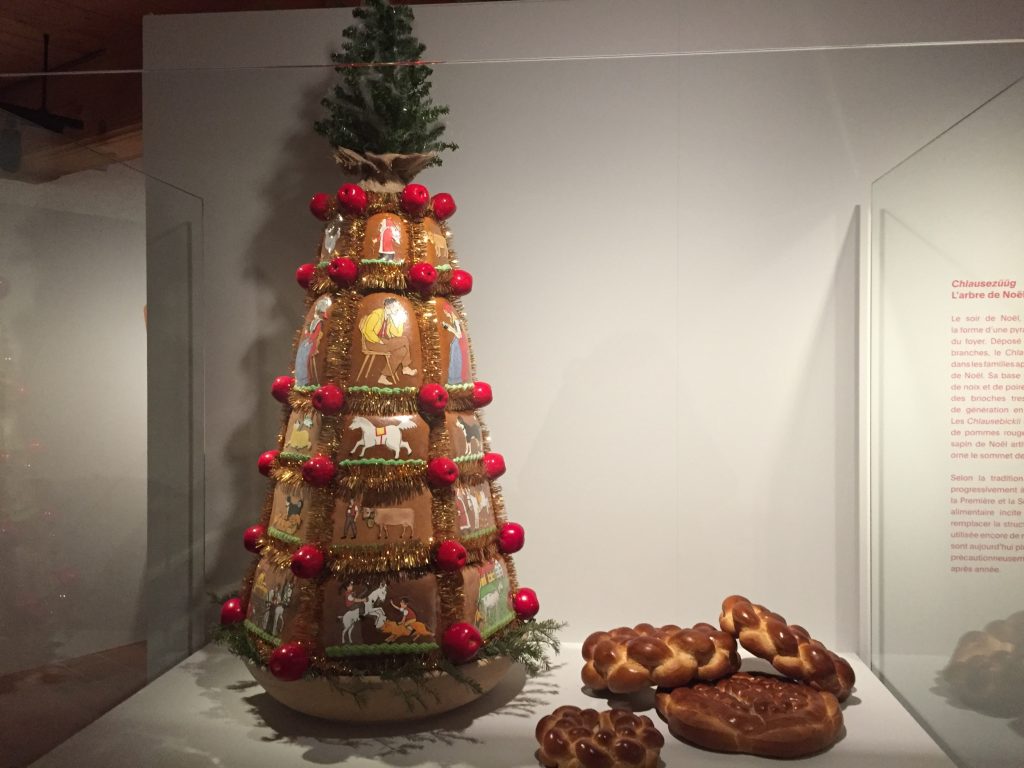
The Chlausezüüg, an edible pyramidal structure, is the Appenzeller version of the Christmas tree. Placed on a table together with the nativity crib, it is the central piece of Christmas, overshadowing the real fir tree. Traditionally, the base was set on a large wooden milk bowl filled with walnuts and dried pears while the supporting structure was made of braided buns baked in various circular or zoomorphic shapes.
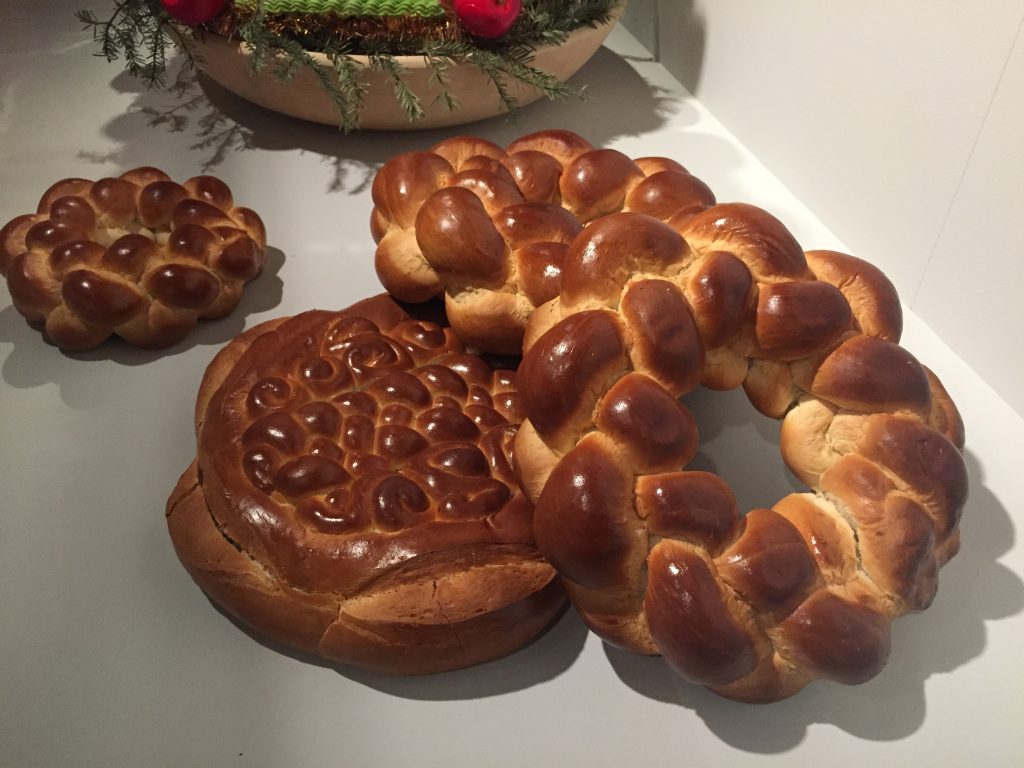
Chlausebickli, Devisli, red apples and tinsel decorate the exterior of the structure. And nowadays, an artificial fir tree is placed on top of the pyramid replacing the traditional gingerbread one that was used before. The Devisli is a confectionery predating Chlausebickli, also imported from Germany around 1860. It is made of flour dough and decorated by hand with scenes from everyday life, animals or flowers. These delicate ornaments also have their roots in appenzeller peasant painted furniture going back to the 16th century.
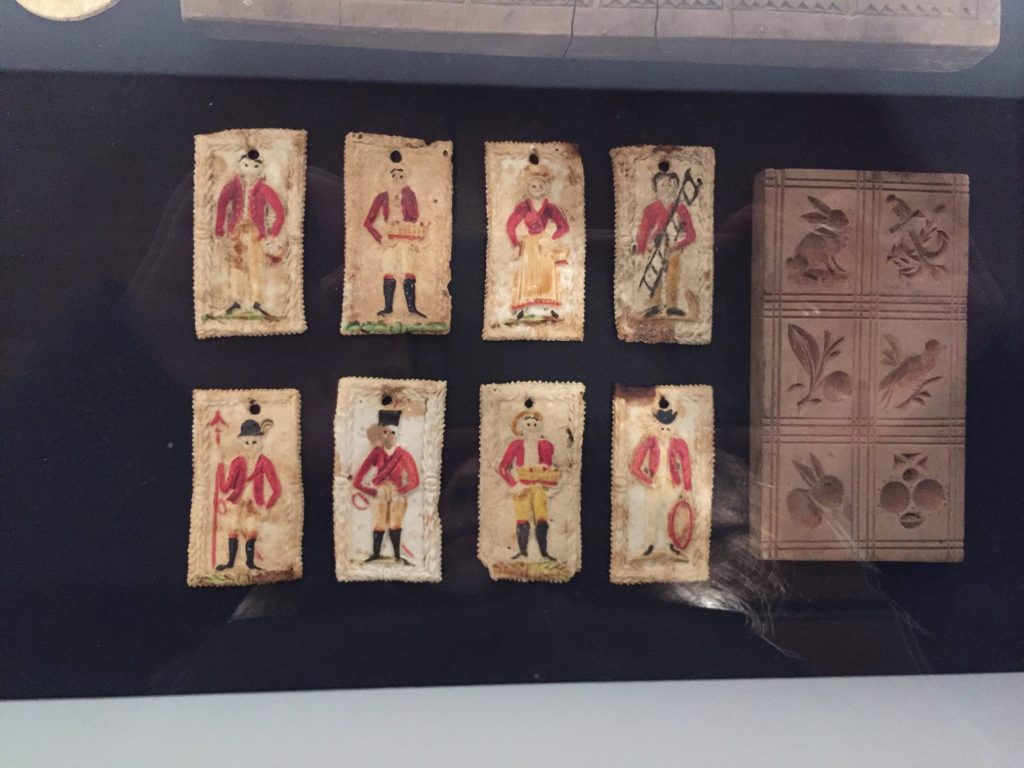
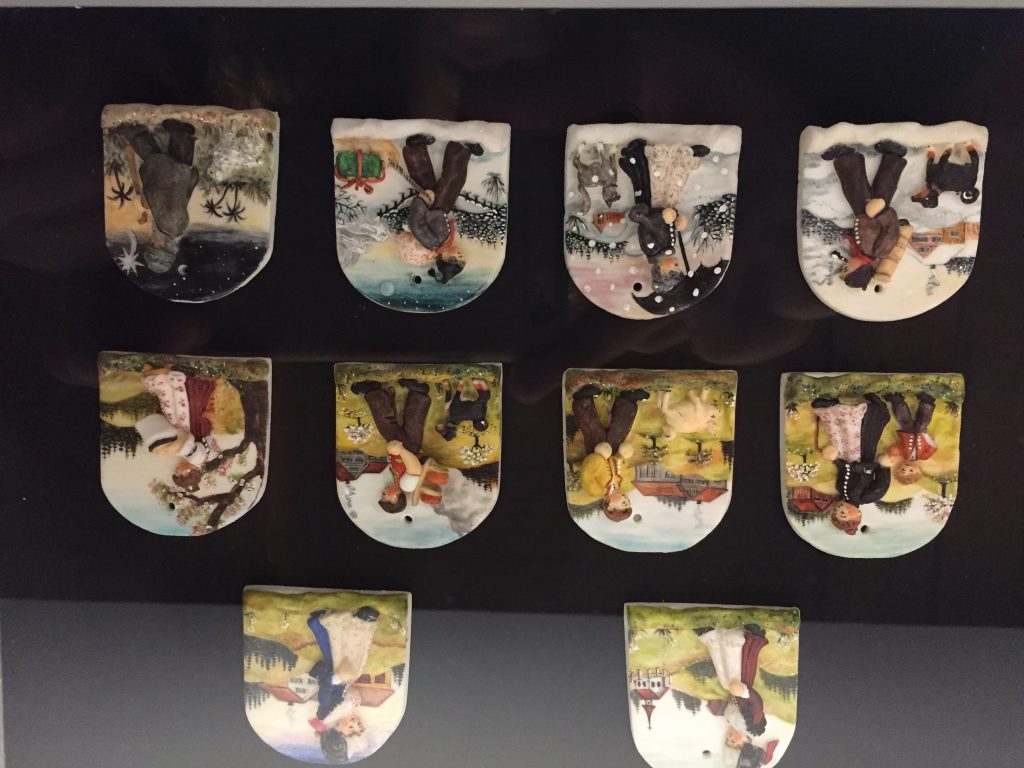
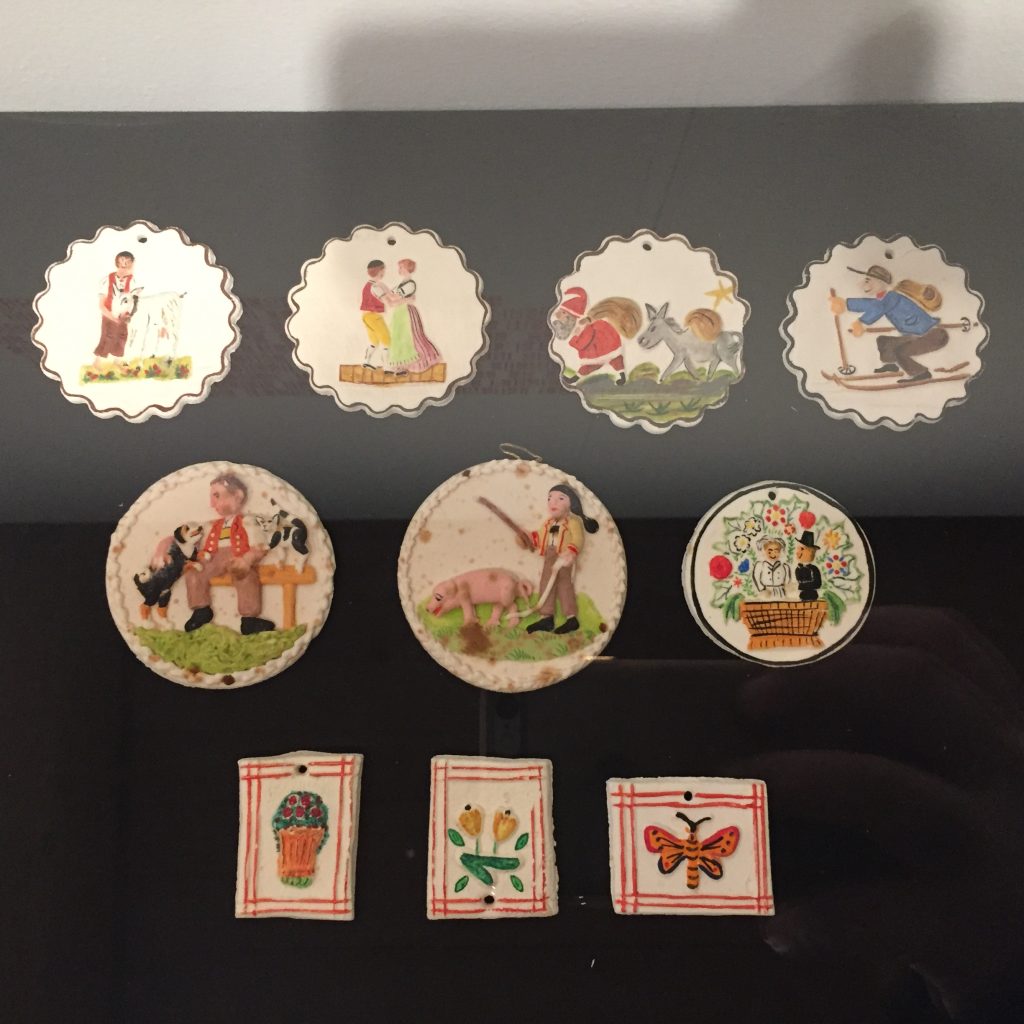
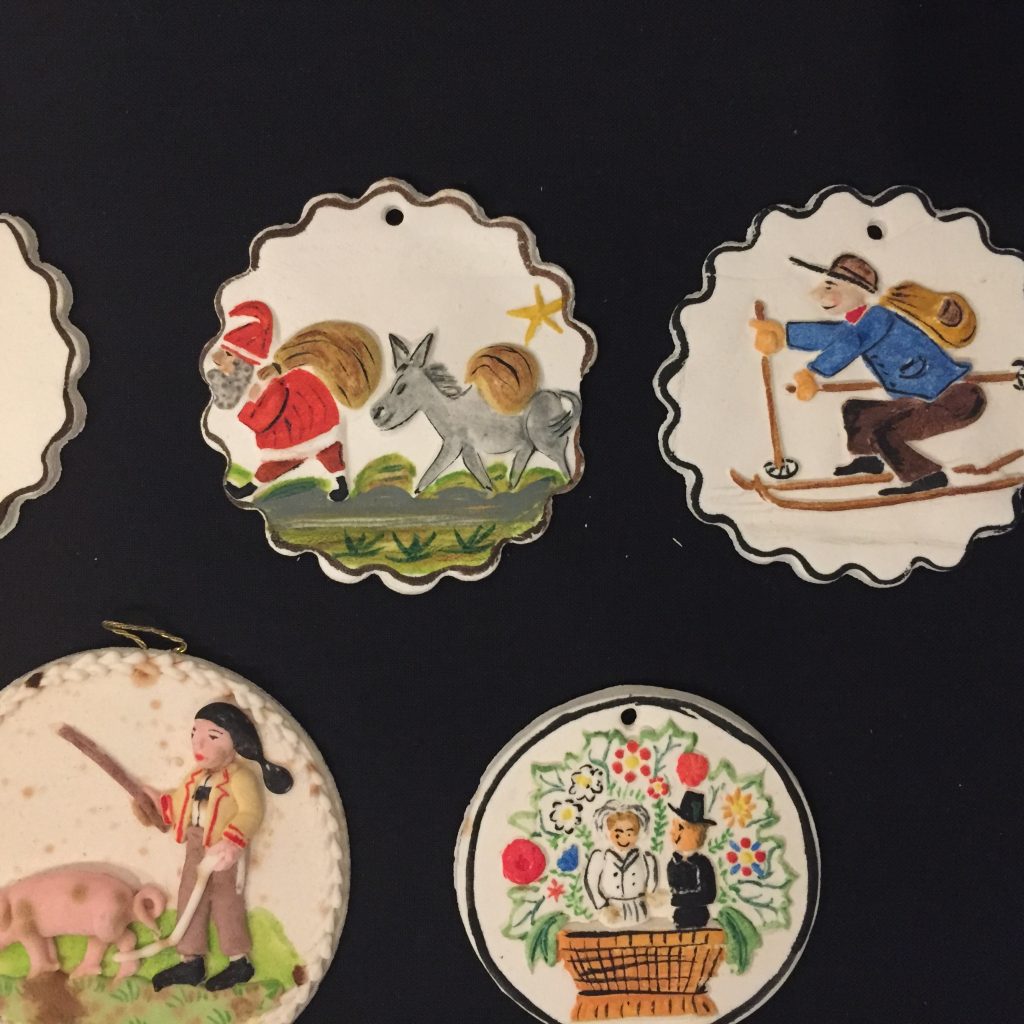
People would actually eat their tree in the period between Christmas and New Year but due to the food scarcity and rationing of the first and second world wars, this bountiful edible structure was replaced with a wooden one, still in use to this day. However, today people no longer eat the beautifully decorated ornaments, they keep them as precious objects to hang in their Chlausezüüg year after year.
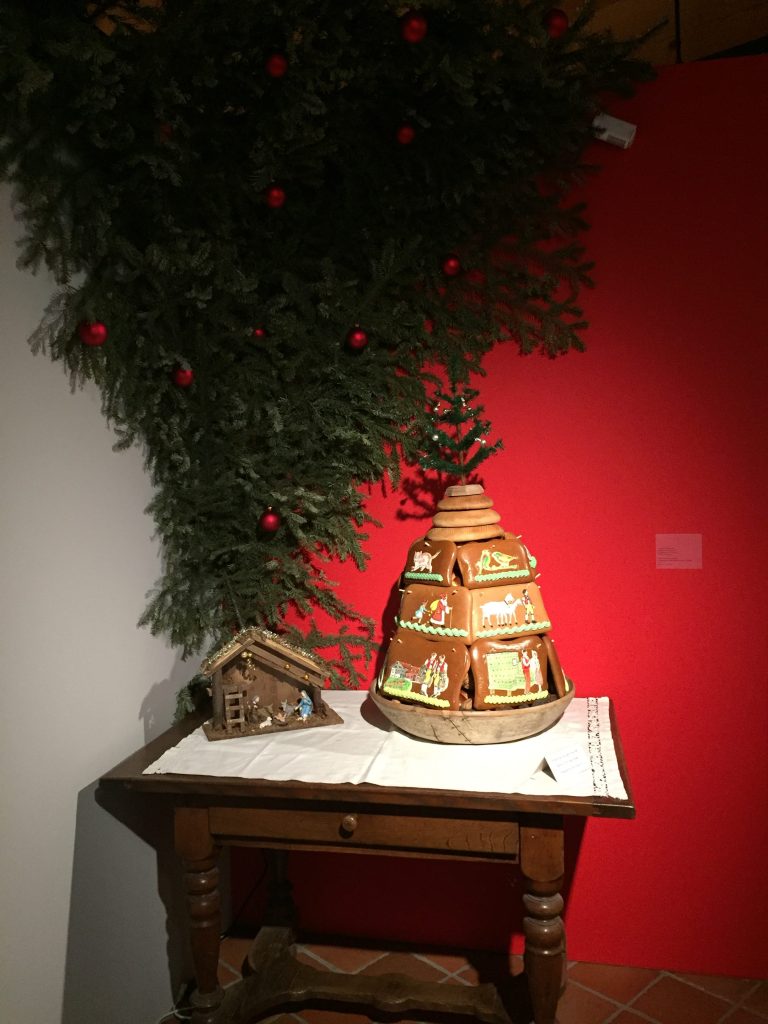
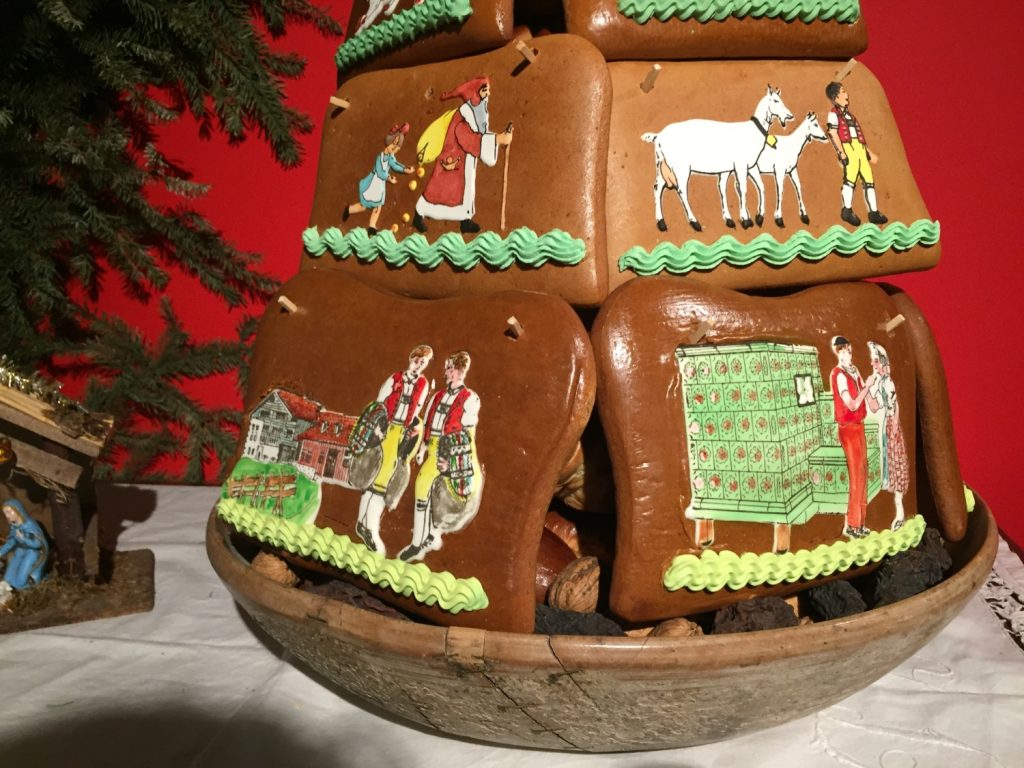
Also on Christmas Eve, the head of the house (usually a man) performs the Räuchle ritual in order to bless and protect the home and its inhabitants for the year to come. Using a pan called Räuchlipfanne, filled with burning incense and a holy branch saved from Palm Sunday, he will smoke every room of the house including the stables, a process he’ll repeat on New Year’s Eve and on Epiphany Day, the 6th of January.
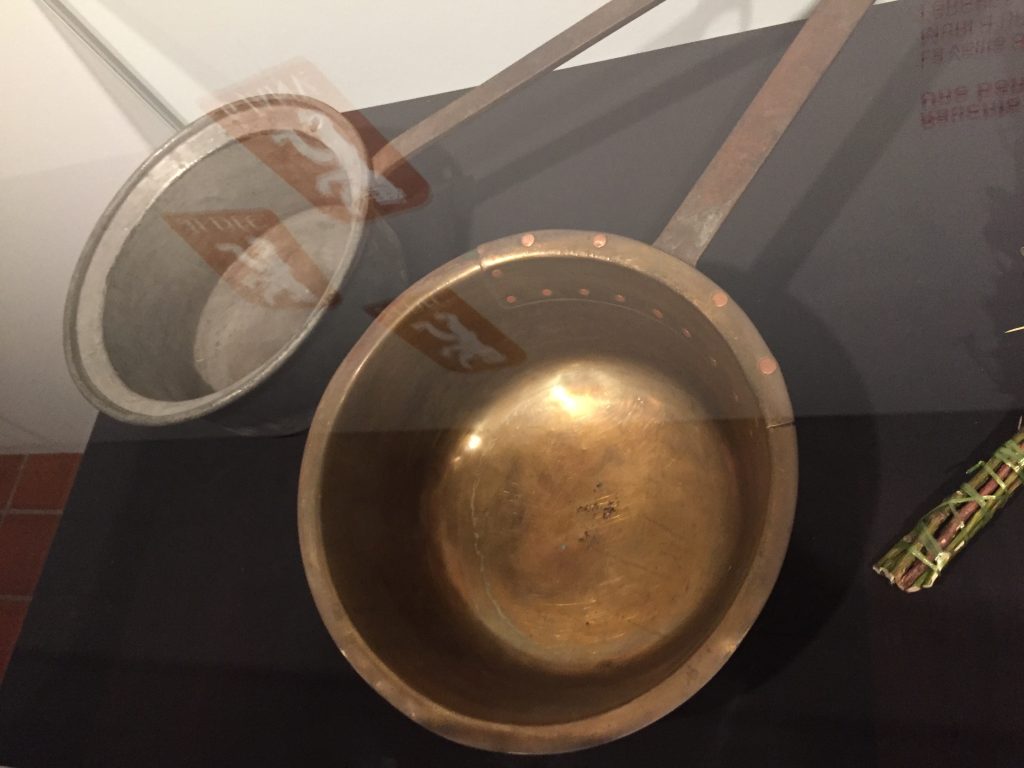

For German speakers here is a video of this tradition.
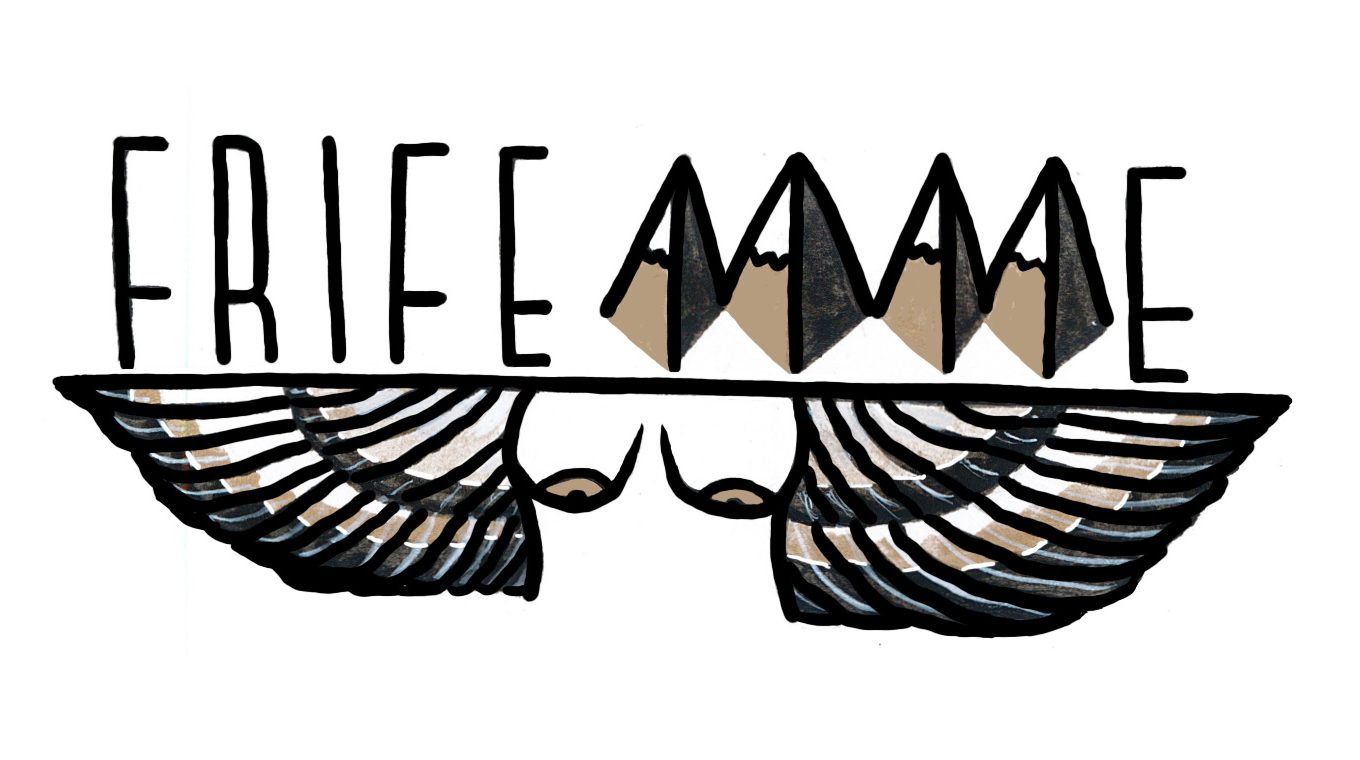
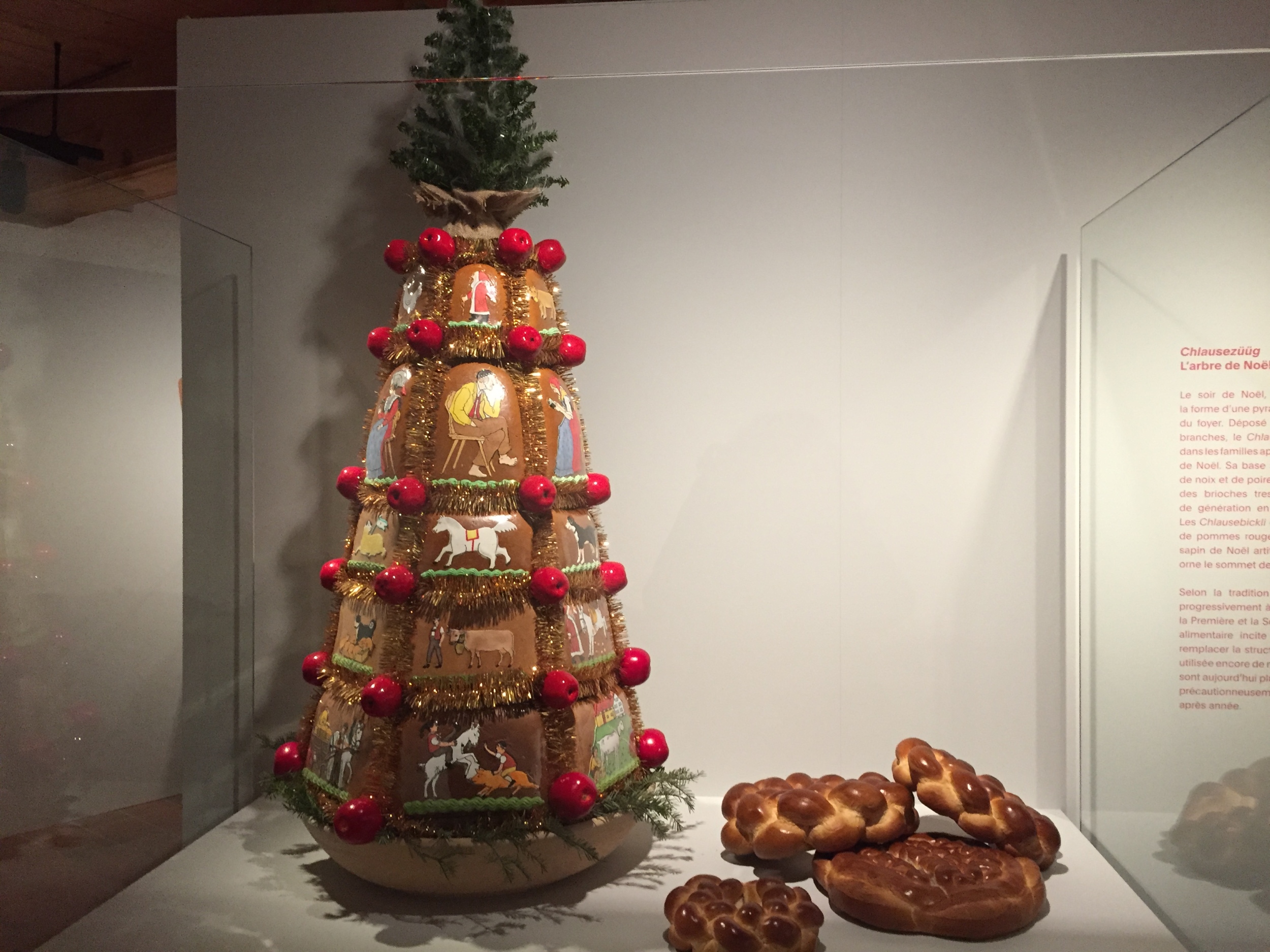
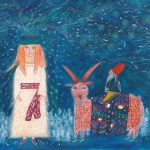
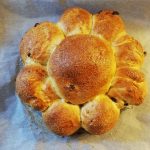

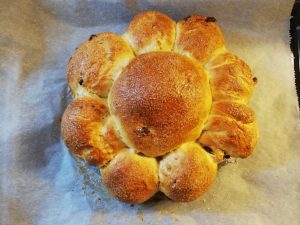
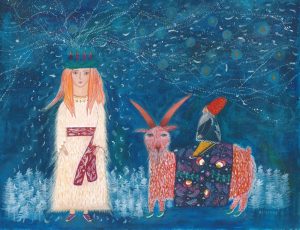
No comment yet, add your voice below!